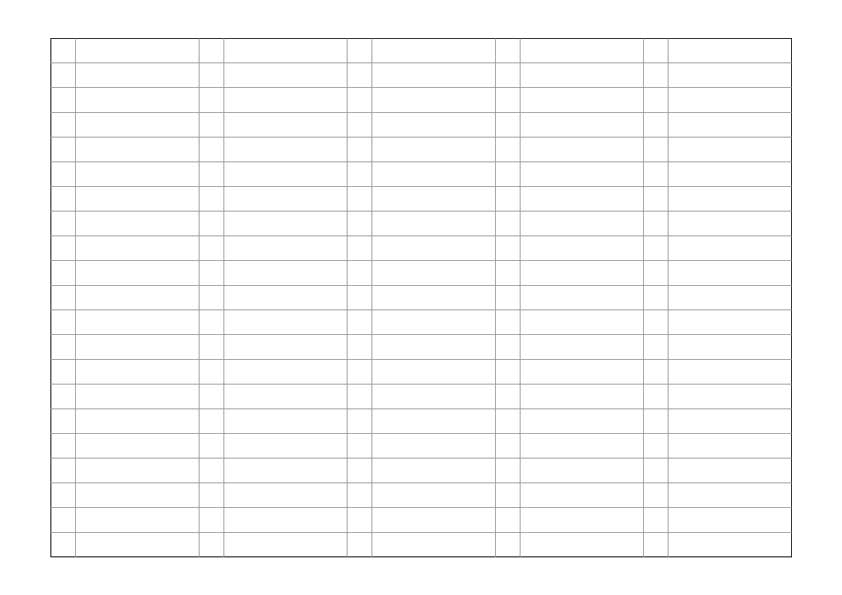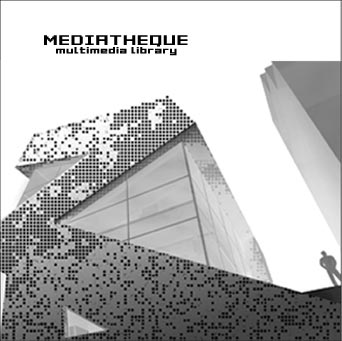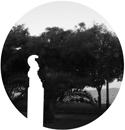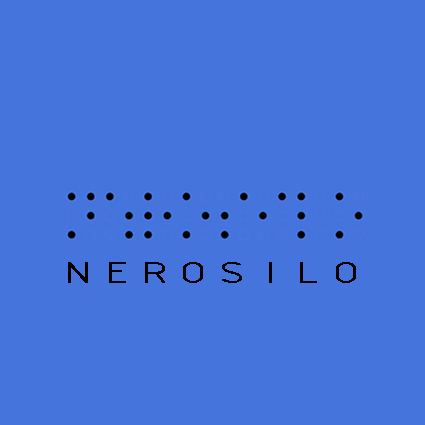

This degree thesis proposes the designing of multiple spaces for entertainment and cultural activities in the Cronio square in Serres, a central point surrounded by the city’s administrative, commercial and entertainment cores which today is in great need of reformation. Its main targets are the new-designed building –in place of the old cinema ‘Cronio’- along with its surrounding environment to integrate seamlessly into the urban environment constituting a continuity and thus becoming an active gathering point for residents. Simultaneously, with the uses located in the building, the goal is the area to become a cultural reference point in the city of Serres.
Designing with starting point the meaning of the word square, namely the 'Broad Street' place where cultural and social events take place, an attempt was made so both the building program and its surrounding area to be organized in such a way as to achieve a continuous free movement of the pedestrian from the ' cinema square 'to the' urban square 'and vice versa. This is achieved through three consecutive surfaces which are folded and joined together to organize and set the required spaces. Thus, the final building includes , structured in separate levels, a cinema- capacity of 280-seats with the possibility to host theatrical performances and other events as well-exhibition hall, seminar room, coffee-bar, wc, offices and other subsidiary areas.
Supervisor: Triantafillidis Giorgos
Reference Number: 269


Our diplomatic project concerns a designing procedure which is based on repetition and variation. The procedure we have followed, has as its starting point, a surface of A4 sized paper. Paper is a flexible material which, aside of being folded, offers the possibilities of being curved without being deteriorated and of being cut while remaining a single surface.
We designed a pattern on the paper and we continued by cutting along the lines of the pattern in such a way, in which the surface remains single. The surface is divided into horizontal strips which remain conjoined in some small parts. The form of the surface differentiates by removing, with displacement or rotation, the small parts of each strip. Any movement affects the whole of the surface, as all of the strips are conjoined in some parts and interact with each other. The surface is being stabilized in different forms by connecting the small parts of the strips with each other. According to which parts are connected with each other, different forms appear from the system.
The rules followed by the system are not restrictive. They have a range of flexibility. This is why every new application of the rules can produce a different result. According to where the strips are cut and how they are removed, the form appearing differentiates. This happens because of the flexibility of paper, which presents in its form, every different movement and influence as curvature. With each movement, the surface of paper gets an entirely new form.
It is characteristic that the system we have created hasn’t got specific scale. It acquires scale according to the location it is placed in and its function. While searching for the restrictions we will apply to the system, we focused on the city of Volos. We indicatively chose two different locations, Eleftheria’s square and the pier. We chose these two locations, to examine the difference of the adaption of the system in different scales and programs. Its location is related to different needs and functions. It is necessary that the system can be adapted to different scales and uses, so that it can serve different needs. To make our system more adaptable, we redefined some rules. First, we evaluated the proportions and the rhythm of the pattern. Despite of the possibility of scale changing, we created the possibility of changing the proportions of the surface, so that the surface gets more adaptable. By changing scale and proportions, the system becomes more flexible, so that it can serve different uses and be adapted in space.
Concerning the pier, we decided to reform the parking area. We, however, chose to concentrate on Eleftheria’s square and to focus on a smaller scale, resulting in the construction of objects of urban equipment. In order to redesign Eleftheria’s square we took into consideration the position of the site and its uses. We aimed to redesign the square so that it offers alternative choices concerning human action. We noted down some actions which are related to the movement and the attitude of a person in the city. We related these actions with restrictions that refer to space, so that people can perform them. We included these constraints as a parameter in the design of the objects. We examine, based on these constrains, how the curved forms, produced by the process of A4, can function in the human scale and serve human action. Our aim was to produce forms which incorporate different functions and, at the same time, enable alternative uses for humans. By focusing more on the objects of the square, our project ends in the construction of two objects of urban equipment in large scale.
Supervisor: Gavrilou Evelyn
Reference Number: 305


The project is divided into two parts. The first part is the manual which explains the principle design of systems that help save energy and provide autonomy in a house. A contexture of systems into a single system has happened. The set includes rainwater collector, solar furnace, solar heating, biomass digestor, hydroponic system, photo-bioreactor algae, oil press and biodiesel processor.
The appearance of the system seems complicated, but consists of humble materials. It is an assembly of used items, garbage, cables, pipes and fluids of changing purity, transparency and clotting interfering or cooperating with the building. One could describe it as a concentrated version of the complexity of gathering the goods of modern life. Can be tailored to each building plan, including an apartment in a more concise form.
The Greenwasher, is the second part and is an example of the set to the minimum residence of a person. Important architectural elements are the rotating chamber, the scaffold, the three-dimensional woven algae photo-bioreactor, the hydroponic tubs and the planted tubs for collection.
Supervisors: Antonas Aristide, Vyzoviti Sophia
Reference Number: 306


The project of this thesis concerns the construction of a mediatheque – multimedia library building in the city of Volos. The term “mediatheque” was used for the first time in the 80s, in order to express in a more specific way the variety of media stored by libraries (mostly audiovisual material). The wide spread of Internet in the following years though, greatly diminished their effect on users. Therefore, it is a reasonable question how this mediatheque building would be useful and functional in the city of Volos and what kind of activities should be included in it.
The mediatheque of this project is part of a wider network of mediatheque buildings, constructed in large Greek cities. Each one of these buildings provides access to physical means and digital forms of information. Moreover it functions as a place of creativity, providing the necessary technological means and the necessary space for the development of works of digital art and interactive installations. These forms of art are exhibited in the exhibition room of the mediatheque where they were produced or in any other building of the network. The greater desired achievement is that the mediatheque will function as a “digital hub” inside the city, transforming the role of its users from receivers to producers of information.
The site that was chosen for the construction of the building is situated in the centre of Volos. The building site has an area of 500m2 and is facing the Dimitriados street. On the other sides of the site are situated the Spiridi street, the pedestrian street Skenderani and 2 adjacent buildings. The uses of space inside the building were developed by studying similar buildings, constructed in other countries, and by adding or removing uses and spaces, depending on the needs of this particular mediatheque, considering its construction in the city of Volos and in this specific building site. The building contains space for workshops in the basement, a large exhibition room on the ground floor, a library on the first floor, a mediatheque on the second one, an amphitheater on the third and offices and a room of Virtual Reality on the fourth.
The form of the building was developed considering the digital form of information that would be stored inside the building and regarding the ambition that the audience will produce their own new information in the form of digital arts. The route that someone has to follow online in order to find “information” is controversial to the simplicity and the solid form of the information as a term. This route of searching has inspired the design of the firm concrete spaces that are used mostly for the movement of people inside the building. These spaces are situated on the perimeter of the site and on different levels of height. The user of the mediatheque walks inside them until he reaches the spaces that will provide him the information he seeks. These concrete blocks also function as the static body of the building, while the floors of rest spaces are lightweight constructions based or hung from it.
Supervisor: Paniyiris Costis
Reference Number: 309


What if we abolished the conventional way of commemorating and we introduced a new one, which would be able to circulate the memory around the city in a more vivid way, bearing in the same time the memory of the place as well as interacting with the public?
The suggested version of memory management is based on three basic points: 1.offering memory, by projecting to the public all the valid documents that can reveal the history of each urban spot, 2.creating a different way of viewing the spot, by elevating the level that the viewer stands, 3. gathering memory, via a camera.
In contrast to the leveled information of nowadays, memo20 represents the escalated elevation towards memory. A portable construction moves around the city and is installed in the exact memory spots. A climax of twenty steps is the core of this construction. The activity of the user expands on the stair, under and around it. The shape of the construction itself is offered for new practices and public activities. It can host projections and testimonies from every memory spot and gathers research information, processed by multimedia systems.
The suggested construction- memo20 substitudes the monument and becomes a womb of information and digital material. It keeps up to certain specifications, as far as its abilities and its morphological characteristics are concerned, which determine its radical contraposition to the existing monuments.
Supervisor: Psychoulis Alexandros
Reference Number: 262


The subject of this dessertation is the transtruction of the grainstore - silo, at the commercial pier in the port of volos, and its elevation to water park, international attraction spot, eternal landmark, under the name of "nerosilo".
The project focuses on matters of form, while dealing with the building plan and connecting functions, on a predefined cellular oblong structure based on verticality and small dimensions. It also copes with the organizing the openings on a blind cell, while maintaining its distinctive and flagship simplicity. Furthermore, managing with vertical spaces is attempted in terms related with water, body, gravity and their interaction in various sections. Organized according to somatometry and general economy principles (space, material, time, usage) which makes the element of versatility and of nerosilo - machine intense in the entire construction. Finally, there are suggested various small scale constructions inside the silo, which serve the suggested uses.
This booklet represents a sampling approach. It is the sum of fragments that contain a variety of subjects and scales, in order to offer a global understanding and coverage a complicated subject.
Supervisor: Kotionis Zissis
Reference Number: 259


The area that concerns the present thesis project is centrally located in the district Gazi and lies vertically to Kerameikos square.
The aim of the project is to create the premises for a firm called Re_inspiration which can be defined in short as a firm specializing in recycled art. The firm in discussion assembles a large amount of “useless” articles in its warehouses. These items, which under other circumstances would end up in landfills, are of a smaller or larger size and the above firm assigns a group of designers to restructure them in order to produce artwork.
The aim of the project is to make a distinct display of the firm’s assembly line to the public. In order to achieve this aim it was necessary to make a natural extension of Kerameikos square within the boundaries of the property.
The building block is erected around the garden that constitutes the public area and consists of:
1. A building for the Administration offices and the artists’ guest rooms
2. Α building that houses the café, the inventory department, the shared ateliers department, and the artists’ private studios.
A significant part of the project is concerned with the relation between the warehouses, the garden and the firm’s display area. The warehouses are located on the second floor in proportion to the garden level and the display area is located in the basement. By reversing the expected position of these areas, that is by giving prominence to the display area and concealing the warehouses, the importance of the production process is stressed with regards to its result.
Supervisors: Tzirtzilakis Yorgos, Daskalakis Konstantios
Reference Number: 302

